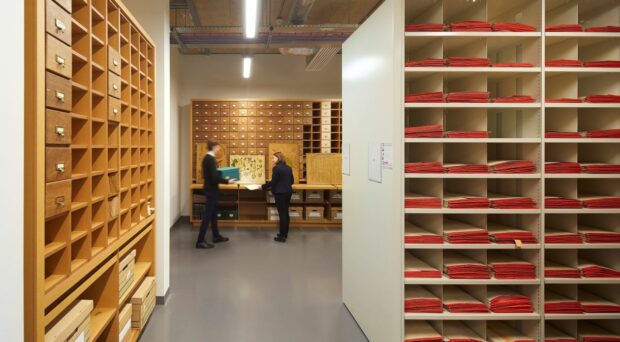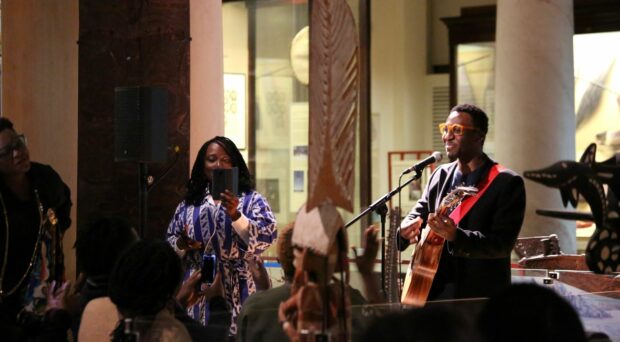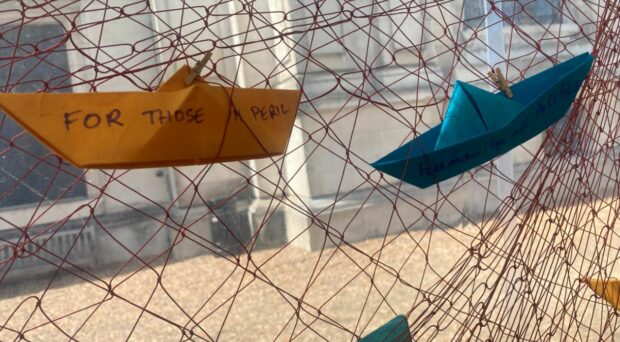Learn about some of the interesting and unusual items in the Botanic Garden’s Cory Library and Archives in this new series of monthly blog posts.
February’s Library Pick: Henslow’s vasculum
This rather battered looking metal box from the Library’s object collection is in fact an item of specialist botanical equipment, known as a vasculum. A vasculum is a container once commonly used by botanists for temporary storage of plant material collected during fieldwork. It provided the means of preserving and transporting plant material between the collection site and the place where it was to be studied or replanted. Made of metal, the vasculum was designed to be carried horizontally, so that plants could lay inside undamaged and protected. On a warm day the occasional sprinkling of water could be applied to keep the plants moist and healthy.

It is not clear quite when the vasculum first came into common use and became standardised in design, but certainly by the mid nineteenth century they were in wide enough use that the term was used without explanation in literature of the day, and that they are recognisable in contemporary depictions of botanists at work.

An illustration from the frontispiece of William Bailey’s 1899 publication Botanizing: a guide to field-collecting and herbarium work, shows a botanist ready for fieldwork, wearing his vasculum on a strap around his body. Not all vascula are small or light enough to be carried on a strap, and we have a number of much larger examples in our collection. Throughout its history the Garden has played an important role in education and research within the University, and it is likely that these large vascula were used not only to transport plant material within the Garden but also from the Garden to the Botany School (now the Department of Plant Sciences), off Downing Street, for use in teaching and research there.
The vasculum no longer has pride of place on the botanist’s equipment list. The development of plastics led to the availability of a multitude of cheap, lightweight, lidded containers and largely dispensed with the need for this piece of specialist equipment. Alex Summers, Glasshouse Supervisor here at the Garden, has recently returned from an expedition to Vietnam. He explains that for collecting plant material which needed to be preserved in its original condition (for cultivation) “we used Tupperware, with the plants wrapped in moist tissue paper … and then silver foil to keep [them] damp”.

The vascula in our collection are important reminders of past activity and ways of working that form part of the Garden’s heritage. This particular example has special significance to the Garden because it belonged to John Stevens Henslow, professor of Botany in the University from 1825-61 and a critical figure in the Garden’s history. It was Henslow who persuaded the University that their original botanic garden (founded in 1762 on what is now the New Museum’s Site) was by the early nineteenth century no longer adequate, and that a new, much larger site was necessary to meet the demands of cutting edge botanical research and teaching. As a result of his campaign the present site was secured and planting began in 1846. This vasculum therefore provides a tangible link to the man to whom today’s Garden owes its foundation.







